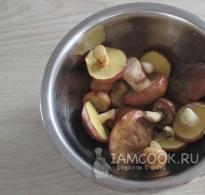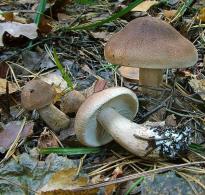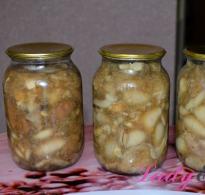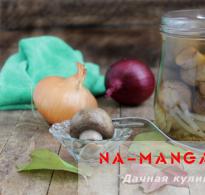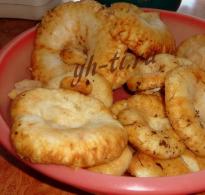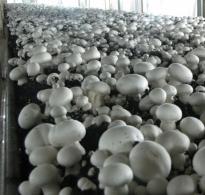How to distinguish edible from poisonous mushrooms? Types of ryadovok mushrooms: photo with names, description
In this article, you will find out what are the edible and poisonous row mushrooms.
Autumn is mushroom season. All lovers of quiet hunting go to the forest to walk along the paths between the trees and collect a basket of mushrooms.
- Some mushrooms go to the basket right away, as the mushroom picker knows for sure that they are edible.
- Inexperienced mushroom pickers are afraid of other mushrooms, despite the fact that they are edible. Ryadovka belongs to such mushrooms, since in this species there are poisonous individuals disguising themselves as normal mushrooms that cannot be eaten.
- There is a variety of edible, conditionally edible and poisonous. You will learn how to distinguish edible from poisonous ryadovka in this article.
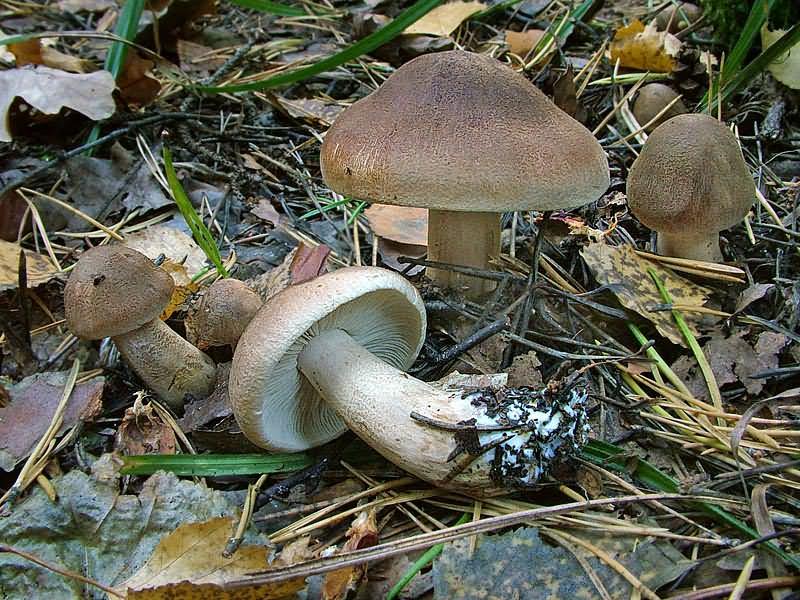
Before going into the forest, you need to understand how to distinguish between edible and poisonous rows. Most varieties are safe and can be fried or boiled for food.
But how can you tell the difference between edible and poisonous mushrooms? It is very difficult to do this, since outwardly mushrooms are very similar, so it is important to learn the characteristic features of each species.
- Poisonous mushrooms flat, almost all types of perfectly even white caps. But there are representatives who have a tubercle. The main difference between poisonous rows is an unpleasant pungent odor that makes you even frown.
- Edible mushrooms look attractive. Their hats and legs are of different colors (pink, purple, purple, gray, and others). Bright plates of beautiful color are located under the head. The flesh of the edible mushroom will be the same shade as the plates under the cap.
Interesting: Experienced mushroom pickers note that some types of ryadovok mushrooms have a unique taste. Therefore, you need to try to cook each of them.
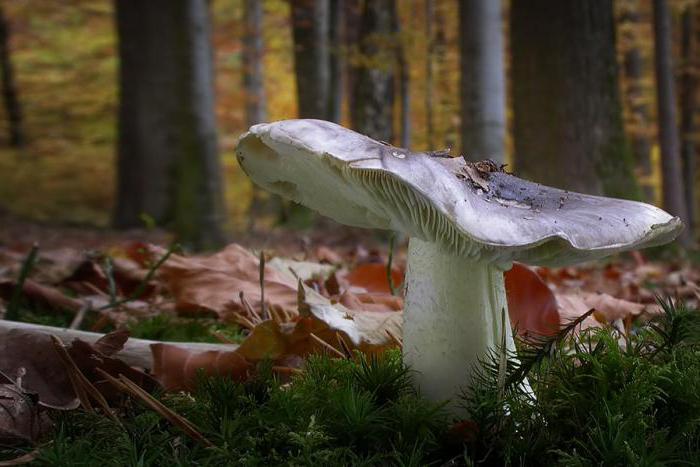
It should be noted that in different reference books, some types of mushrooms are described in different ways.
- In one reference book, one or another species may be indicated as edible, in another - conditionally edible, and in the third - poisonous.
- Therefore, experienced mushroom pickers rely only on their own experience. They already know what smell edible specimens have and how bad mushrooms smell bad. But it is better not to take risks and not pick mushroom fruits, which can be confused with poisonous ones.
- For example, the ryadovka is gray, completely white (cap and leg), translucent and brindle - are considered poisonous.
Advice: In order not to be mistaken, collect only rows of bright purple, as well as crowded rows with dark and brown skin on the cap, yellow-red and giant ones. All of them are different in color, diameter of the cap and length of the leg. It is very easy to confuse the gray and lilac-legged ryadovka with edible individuals.
Remember: Poisonous mushrooms of this species are more dangerous than fly agaric!
Now let's take a closer look at each mushroom of this species in order to know what edible and poisonous rows look like.
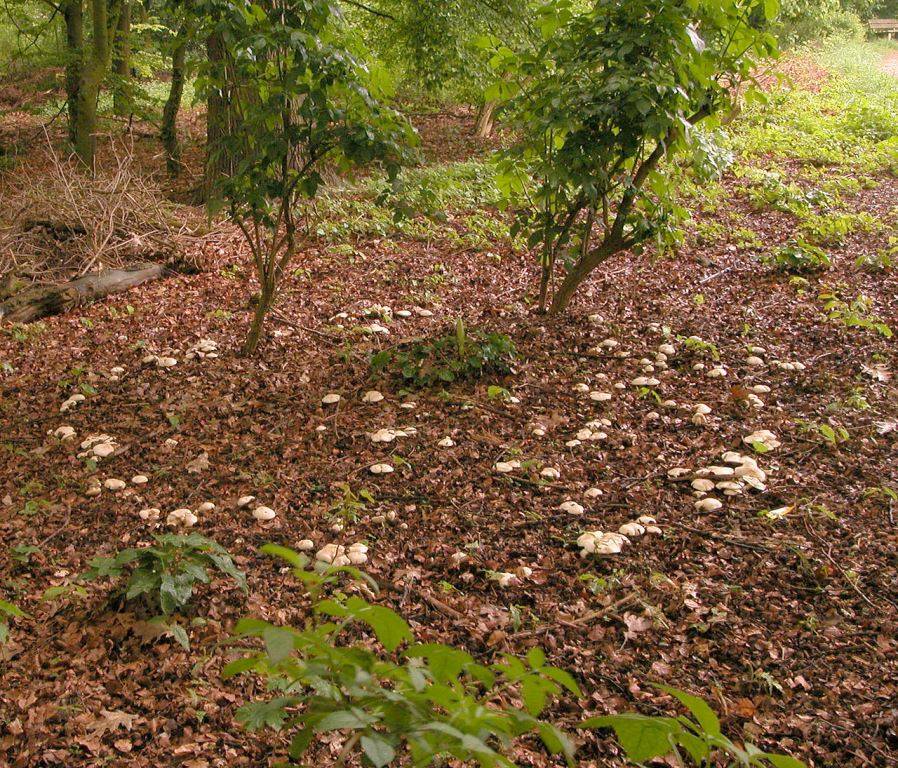
Rowed mushrooms grow in heaps in a row, sometimes forming "witch circles". If you see a whole row or circle of mushrooms near a tree, then these are rows. Now it remains only to figure out which of them are edible and which are poisonous.
You can save this article to your phone or print a photo on a color printer so that you can see and compare those mushrooms that you come across on your way. There are 2000 varieties of row mushrooms. Only 81 species are more or less well-known, and the following rows are considered the most common species in our forests:
- Mayskaya
- Matsutake
- Purple-footed
- Giant
- Yellow-brown
- Purple
- Gray
- Bored
- Topoleva
- Yellow-red
- Green
- Earthy
The rest of the species are almost never found in our country and mushroom pickers know nothing about them.
Types, description, names and photos of edible row mushrooms:
The row is gray (from the Latin Tricholoma portentosum). In a young individual, the cap resembles a ball with a diameter of 4 cm. In an adult mushroom, it reaches a size of 12 cm and becomes flat and has bumpy irregularities. The leg is smooth, whitish with a gray-yellow tint. The plates are massive, but rarely spaced from each other. In a young individual, it is white, and then they acquire a yellow or gray tint. The cut pulp has a yellow tint, and has a light but persistent aroma.
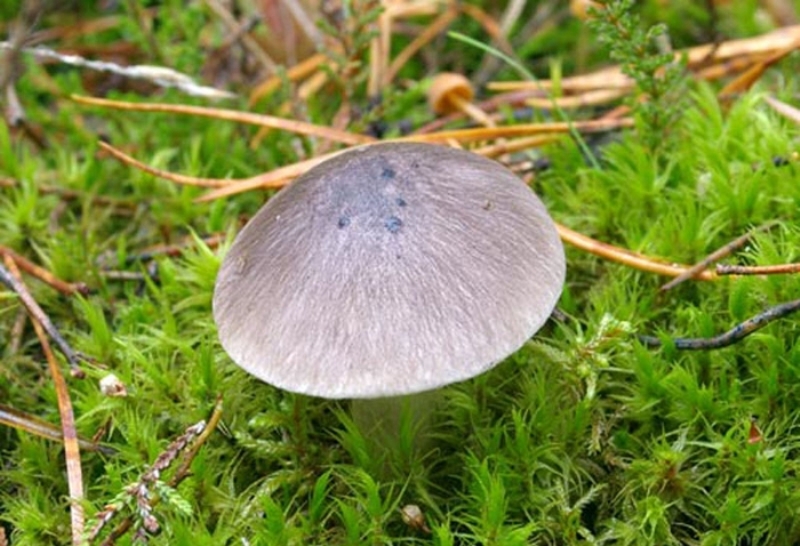
Lilac-footed row (from Latin Lepista personata, Lepista saeva). The main difference between this mushroom is the purple color of the leg. The hat is wide in diameter from 6 to 15 cm. It often has a glossy, even surface with a yellow-violet tint. There are many plates, they are massive and have a beige color. Young individuals have a fibrous film in the form of a ring on the stalk.
The fruit pulp has a pleasant and delicate fruit aroma, sweet aftertaste and gray or gray-violet color. This mushroom is often mistaken for an inedible species. A distinctive feature lies precisely in the taste, color and aroma of the pulp fabrics. The inedible mushroom has an unpleasant specific aroma, which after a few hours only gets worse and resembles the smell of rotten vegetables.
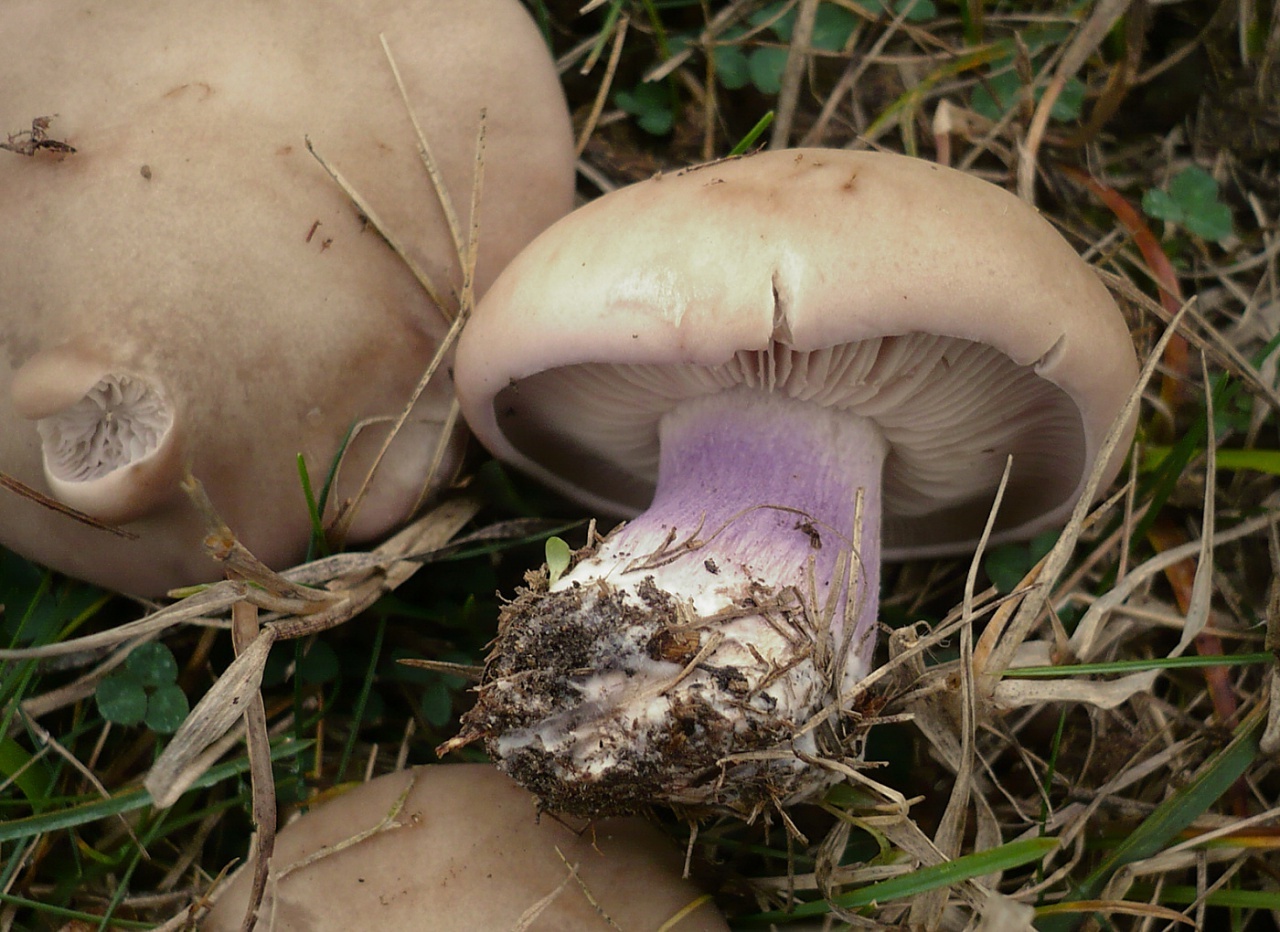
Edible mushrooms - lilac-footed rows - can be confused with inedible
The row is earthy (from the Latin Tricholoma terreum). Mushrooms 1-3 days old have a small cap - 3-9 cm, cone-shaped. Then the cap becomes almost almost flat with a slight rise in the middle. Has a grayish color, which can be diluted with a brown tint.
This type can be found with a reddish hat, closer to a brick one. The leg is up to 9 cm long and up to 2 cm in diameter. The plates are sparsely arranged, with an uneven pattern and have a gray tint. The pulp is fleshy, without a pronounced mushroom or coniferous aftertaste with a light flour aroma.
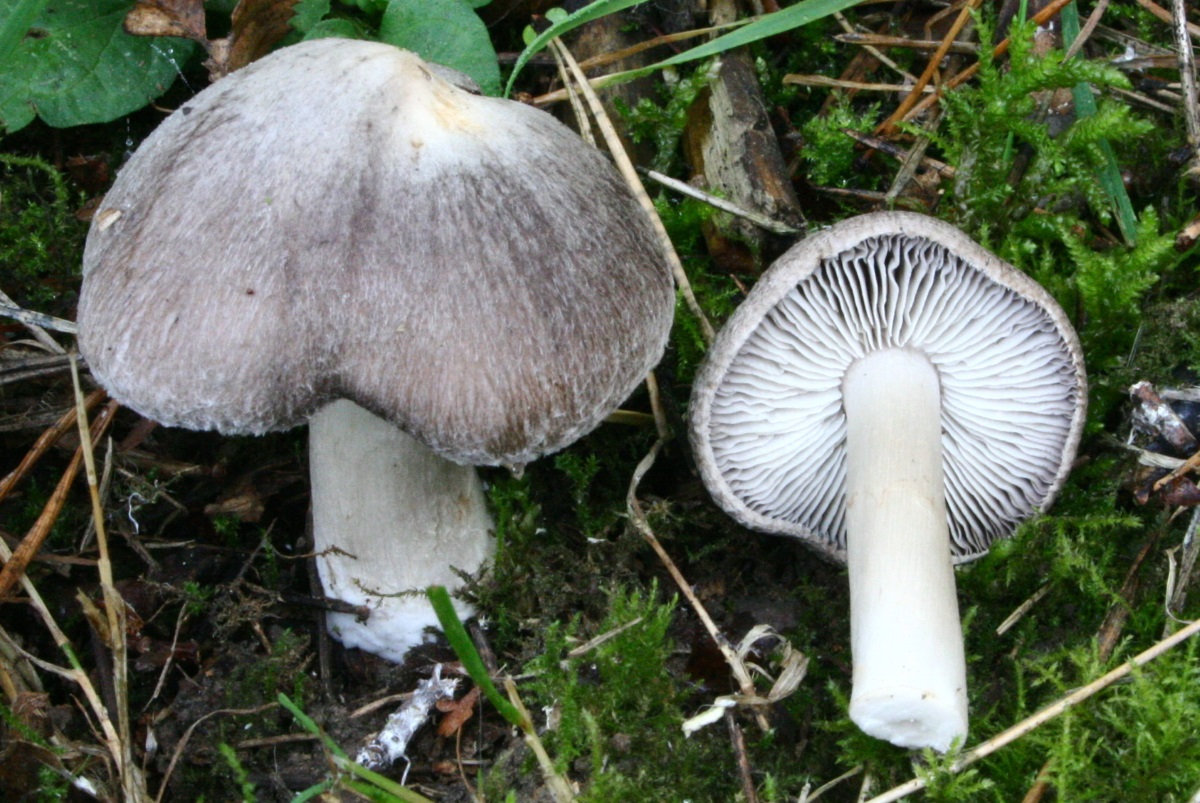
Mushroom-ryadovka Matsutake (from Latin Tricholoma matsutake). It is prized in oriental cuisine due to its specific bouquet of pine aromas and delicate spices. The delicious mushroom taste makes you fall in love with the dishes prepared with this mushroom. The wide silk-surfaced hat is brown in color and can be up to 20 cm in diameter.
A mature mushroom may crack the cap and show a prominent white flesh. The leg is long - up to 20 cm, up to 2.5 cm thick. A fibrous ring can be seen under the cap. The plates are of a beautiful light shade, the fleshy structure is white with a pleasant aroma of cinnamon.
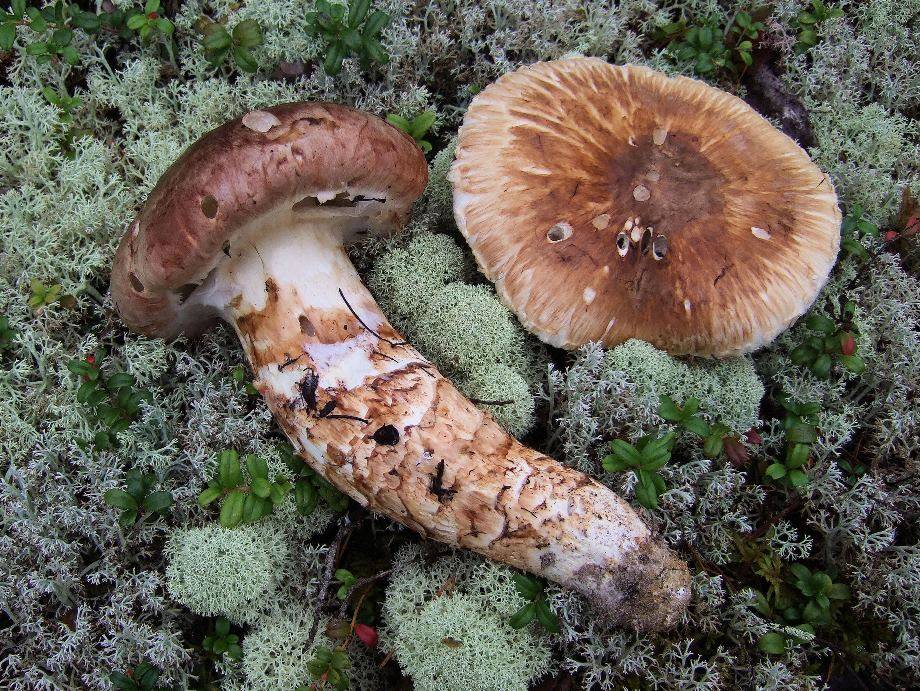
The row is giant (from the Latin Tricholoma colossus). The diameter of the cap can reach 20 cm. The round, resembling the shape of a ball, the cap of a young mushroom eventually changes to a flat-spread cap in an adult mushroom. The skin of the cap has a pronounced smoothness, brick shade, with a light stripe along the edge. The leg has a tuber-shaped seal at the mycelium.
The thickness can reach 6 cm in diameter, the height is 10 cm. The plates are often located, pure white in color, older individuals can have a brick-brown hue.
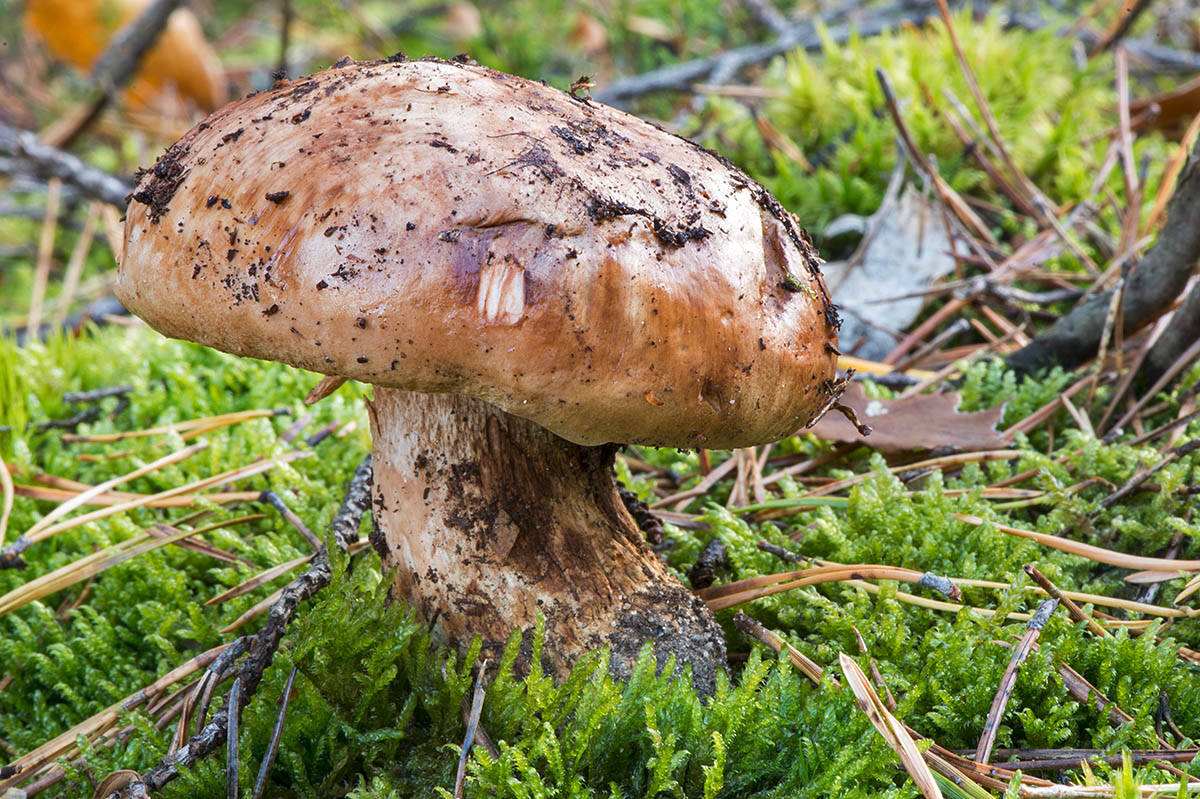
Edible mushrooms ryadovka: view - giant ryadovka
The row is yellow-brown (from the Latin Tricholoma fulvum). A mushroom 1-3 days old has a slightly raised cap. As it grows, it will become flat-spread with a hill in the middle. The peel of the fruiting body sticks to the fingers, maybe with flaky scales. The diameter of the cap reaches 15 cm, the color is brick with a red tint, a light shade around the edges.
The leg is slightly thickened in the area of the mycelium. The plates can be located rarely or, conversely, often, but they are uneven. The color of the plates is light yellow, then they are covered with a brown round pattern. The fleshy structure is white or slightly yellow, bitter in taste and has a pleasant pine aroma.
Edible mushrooms rowing: type - yellow-brown rowing
Crowded row (from Latin Lyophyllum decastes)... It is considered a low quality mushroom. Hats in the form of a ball, with edges tucked inward, concave in the middle. The diameter of the cap can be from 4 to 12 cm. The surface is smooth-velvety, slightly scaly with a gray tint. In an adult, the color of the cap becomes gray-light. The legs of the mushrooms are light, grow together.
One heap can contain up to 20 or more individuals. Leg length up to 80 mm, thickness up to 25 mm. The leg stands straight or can be slightly tilted to the side. The lamellas are often spaced apart, even but not perfect. The fleshy structure is dense, brown or grayish, with a flour aroma and a delicate pleasant taste.
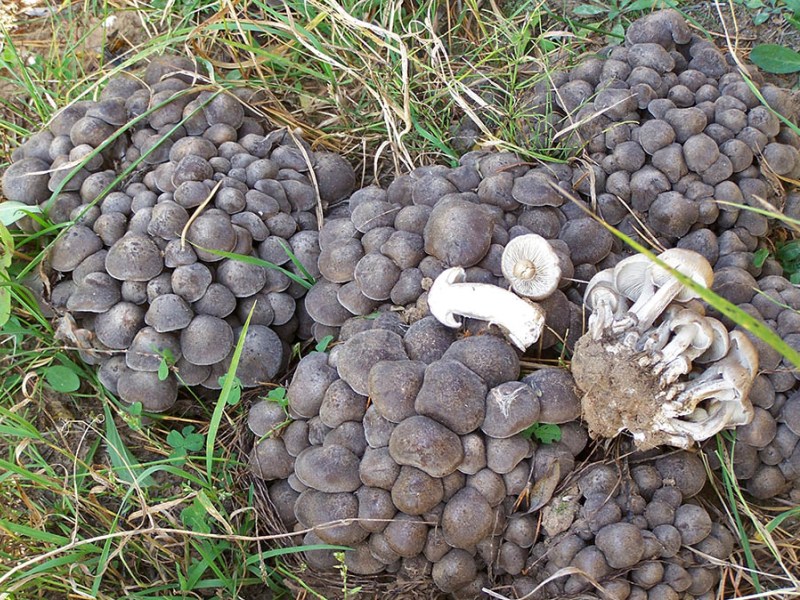
Edible mushrooms - crowded row
May row (from Latin Calocybe gambosa)... It bears this name, as it can be found in the coniferous forest in May. The diameter of the cap is only 4-6 cm. Its shape in young individuals is flat-spread with a slightly round bend. A mature fruiting body is characterized by a convexity of the cap with a small sweep at the edges. Fibrous peel, as if strewn with flakes.
Color from light beige in young, to white in mature individuals. If the mushroom is overripe, the cap will be yellow. The leg is straight - 4-9 cm, up to 3.5 cm thick. The color of the leg is white-yellow, the base is brick-colored with a yellow tint. The lamellae are often located. They have a white tint in a young fruit tree, then they become creamy. The pulp is white with a pleasant aroma.
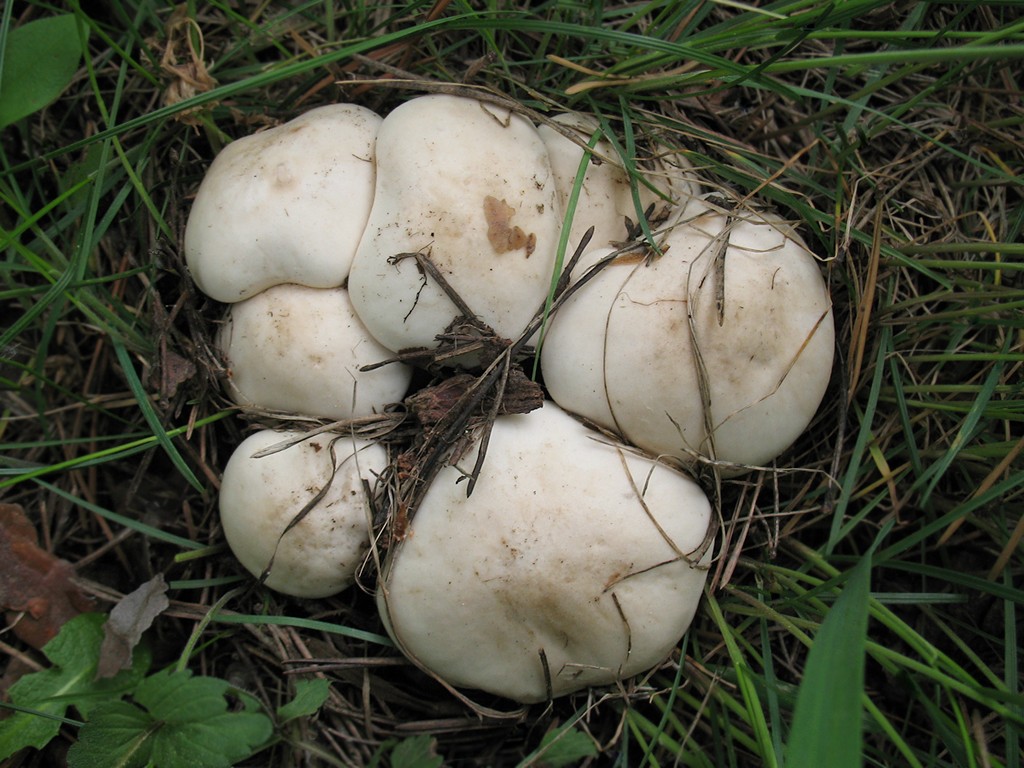
Edible mushrooms - ryadovka may
Poplar ryadovka (from Latin Tricholoma populinum). It is considered a conditionally edible mushroom. In the regions of our country, where there are few other types of mushrooms, it is collected by mushroom pickers and delicious dishes are prepared from such a mushroom, as from a valuable food product. A hat with a diameter of 6 to 12 cm is distinguished by a slight bulge, then it becomes sweeping, but not even. The skin is slimy and sticky to the fingers, has a gloss, yellow-brown color.
The leg is from 3 to 8 cm long, up to 4 cm thick. The young fruiting body has a light shade, then it acquires a reddish-brown color, and if you press, it will darken. Lamellae are white, in an adult fruiting body they are brown and with a brick color in overgrown mushrooms. The fleshy structure is white with a flour aroma. In the cap, the flesh can be pink, in the leg it is brick-colored with a grayish tinge.
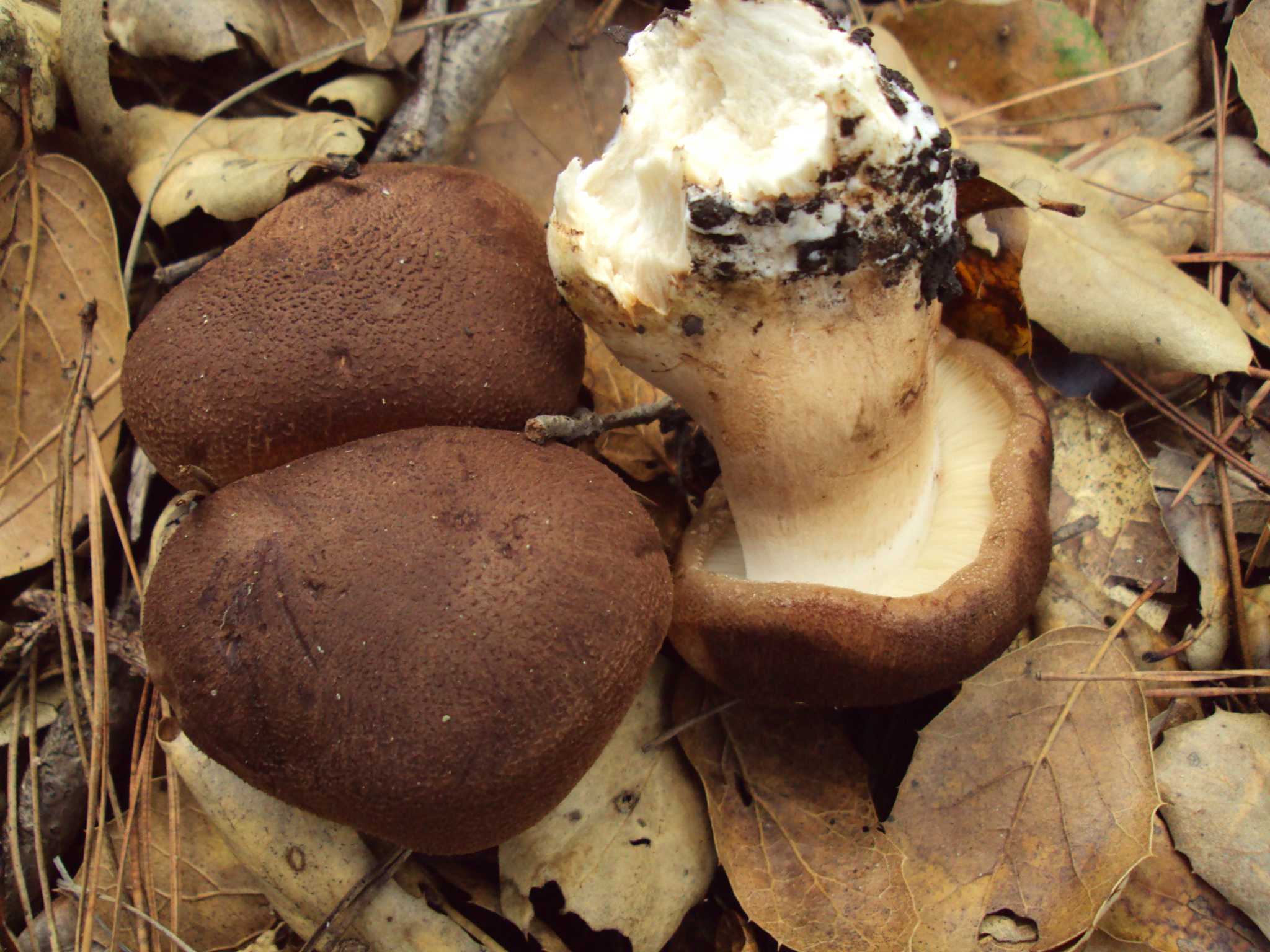
Edible mushrooms - poplar rows
The row is purple (from the Latin Lepista nuda). Conditionally edible mushroom. The cap of large and mature individuals can reach a size of 20 cm. A young mushroom has a spherical cap. Then it straightens out and becomes prostrate or concave inward with curved edges. The purple color of the smooth and glossy skin fades as the mushroom matures.
In an adult fungus, it becomes brownish or light brown in color. The leg is high - up to 10 cm, thickness - up to 3 cm. Slightly thickened at the base. Top covered with flakes. The stem is purple and brightens as the mushroom grows. The plates are thin, often spaced, and purple in color. Overgrown mushrooms have brown plates. The pulp is also purple, but of a light shade. Then it turns yellow. Has a delicate taste and aroma of anise.
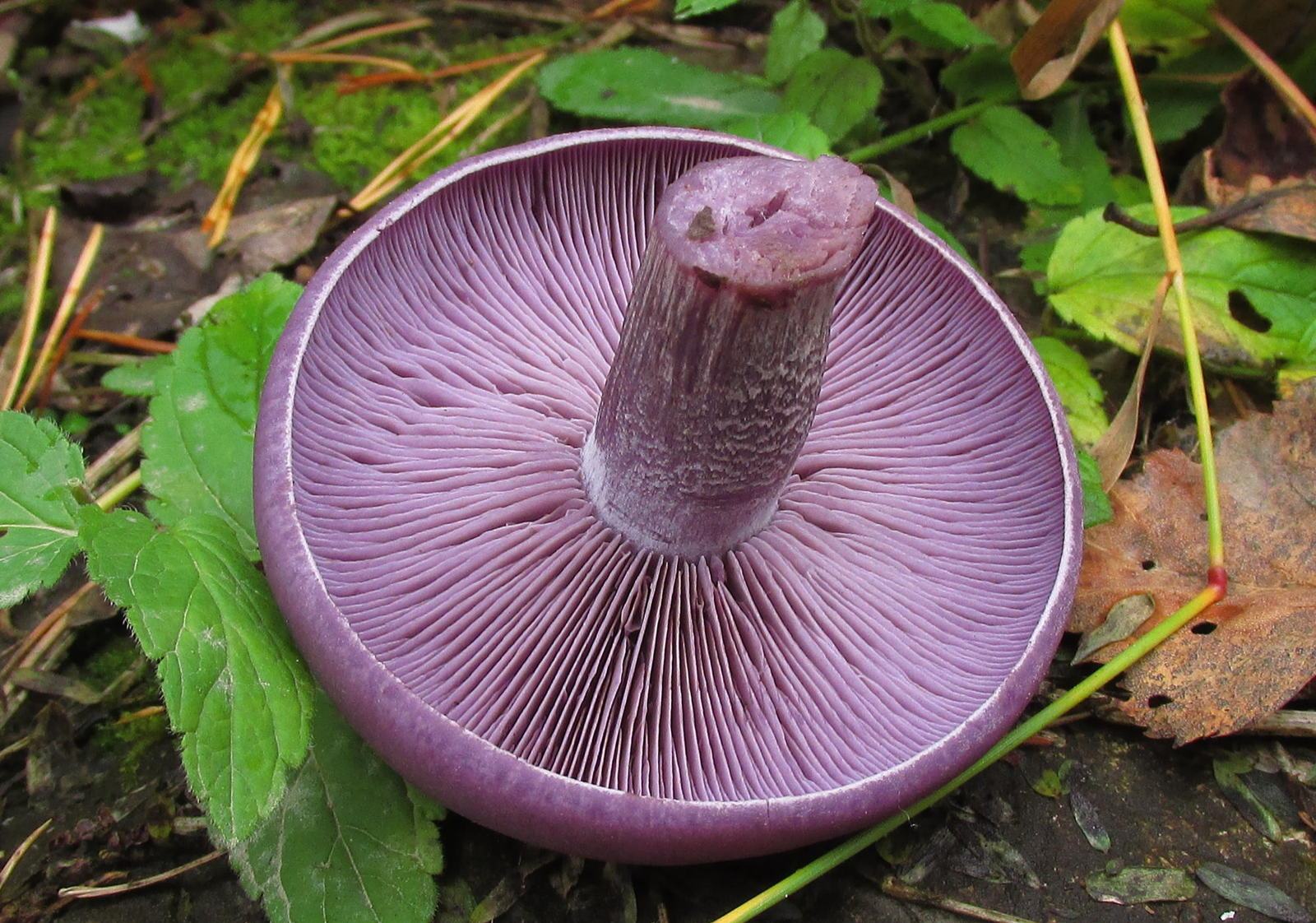
Edible mushrooms - purple ryadovka
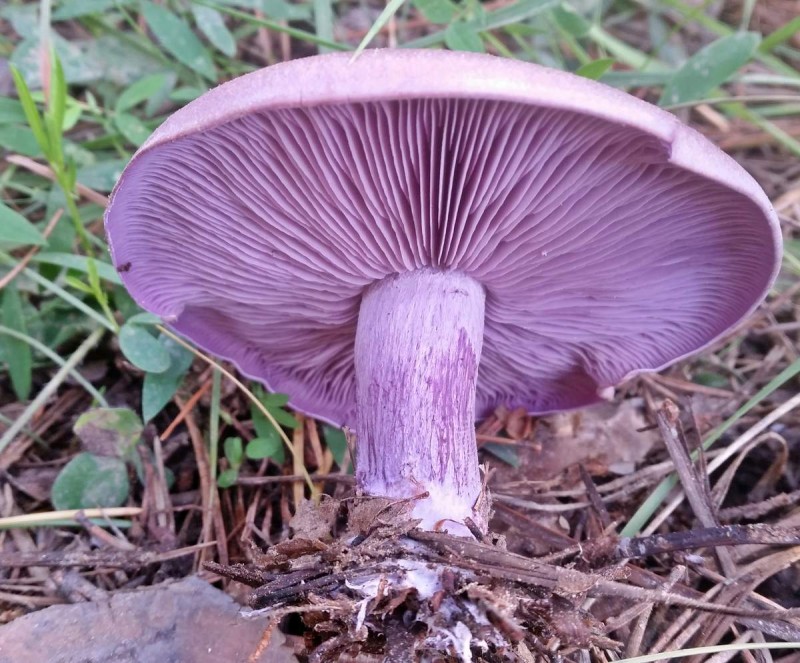
The row is yellow-red (from the Latin Tricholomopsis rutilans). Conditionally edible mushroom. It is even considered inedible due to its bitter taste and sour smell. But this mushroom makes delicious first courses. Experienced mushroom pickers collect it and freeze it in the refrigerator for the winter. The cap is rounded in a young individual, and then spread out in a mature individual.
Diameter up to 15 cm. The skin is dryish, slightly velvety, orange in color with a yellow tinge. There are small scales throughout the cap. The leg is high - up to 10 cm, thickness - up to 2.5 cm. There is a thickening at the base. The color of the leg is the same as that of the cap. The plates are yellow, slightly wavy. The pulp is a juicy yellow hue, has a characteristic bitterness and a smell of wood.
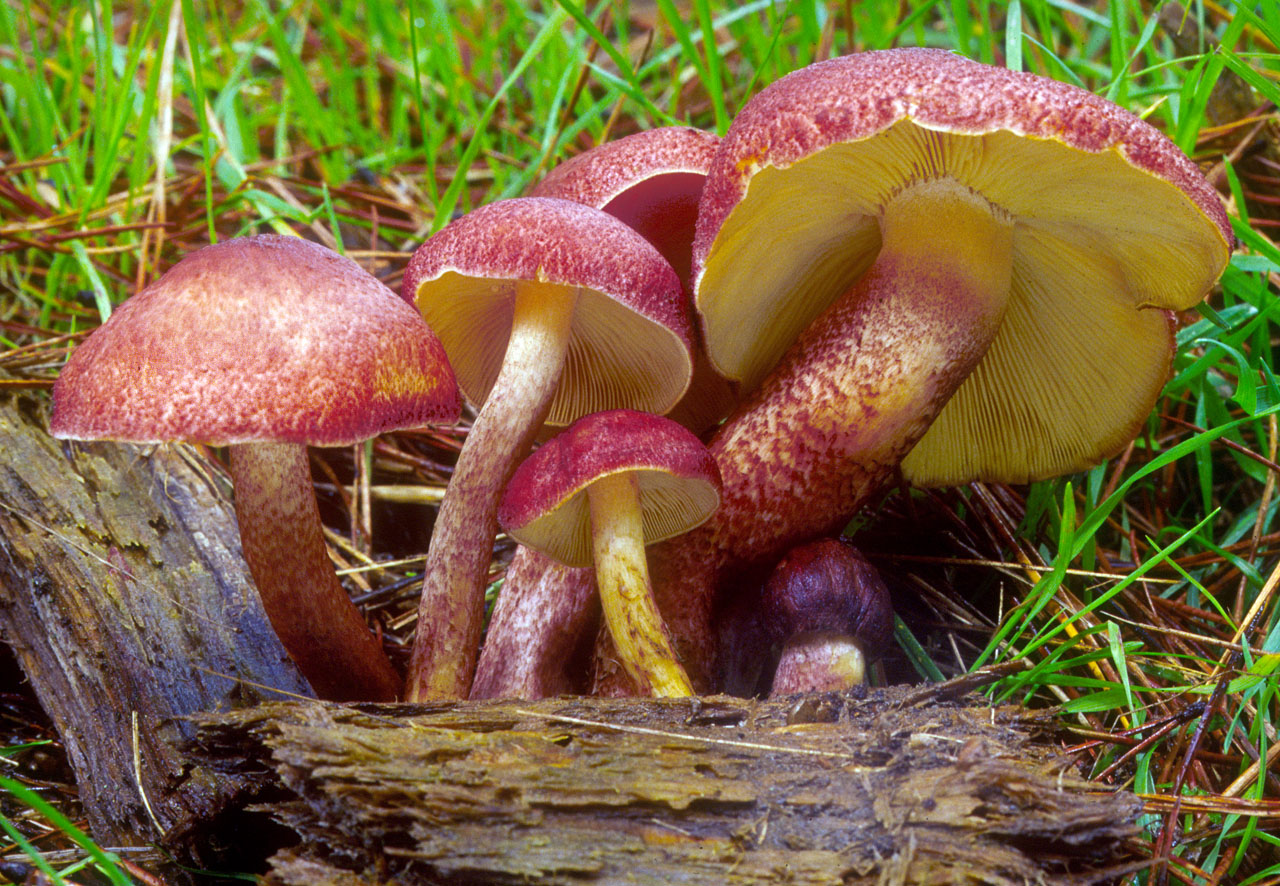
Greenfinch row (from Latin Tricholoma equestre, Tricholoma flavovirens). Conditionally edible mushroom. The green color of the mushroom flesh remains even after cooking. Many guides claim that this mushroom is poisonous, as deaths have been recorded after eating it. But in regions where there are few other mushrooms, this species is consumed without fear. For example, in the south of Russia, it grows in sand. Mushroom pickers find such a mushroom by a crack on the surface of the sand. The mushroom cap is large - up to 15 cm.
In a young individual, it is convex, then it becomes prostrate. The skin of the cap is slightly slimy, green-yellow in color. Often covered with sand, as this type of row grows in such a substrate. The leg is even, yellowish-green, up to 9 cm long. At the base it is strewn with flakes. The plates are often arranged, yellow or greenish in color. The pulp is white, but turns green-yellow as it ripens. This mushroom has a flour smell and a mild taste. It is recommended only to salt it, since its weak taste is lost during heat treatment.

Poisonous mushrooms ryadovka: types, description, names, photos
As mentioned above, poisonous rows are much more toxic than fly agaric. Therefore, it is important to distinguish between those mushrooms that cannot be eaten in order to avoid severe poisoning. Types, description, names and photos of poisonous mushrooms of the row:
Row white (from Latin Tricholoma album)... Outwardly it resembles a champignon. The leg is long - up to 10 cm, there is a slight thickening at the bottom. The color of the leg is the same as that of the cap. In mature individuals, the thickening at the bottom becomes brown. The cap is at first rounded, then it becomes wide and open - up to 10 cm. The flesh is white, when cut it becomes pink. The smell is specific - musty.
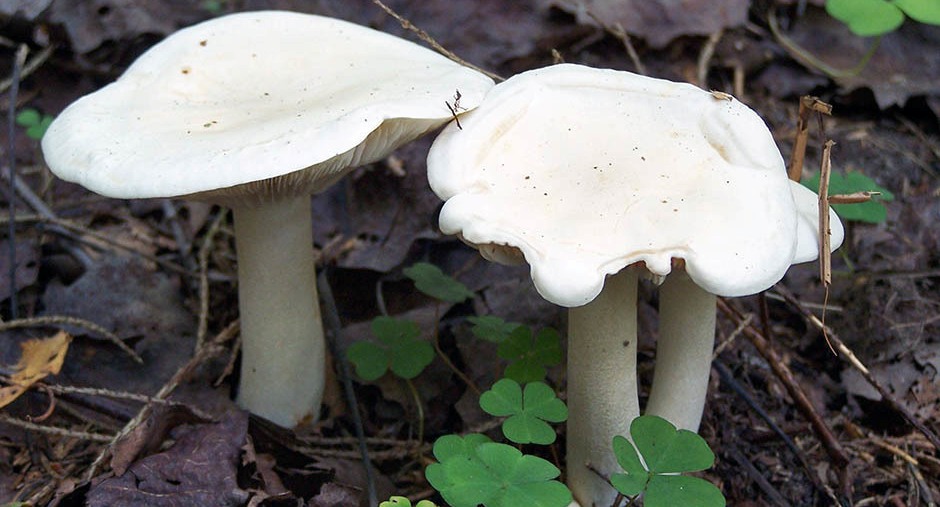
The row is sulphurous (from the Latin Tricholoma sulphureum). This mushroom is considered to be of low toxicity, but accordingly, it still cannot be used for food. It's just that the poisoning will not be as strong as when using, for example, a white row. The leg and cap are of an unpleasant gray-yellow color.
The old mushroom will turn brown over time, and the cap will become velvety and grow from 3 to 8 cm. There is a notch in the middle of the fossa. The leg is long - up to 11 cm. The bottom is covered with scales and thickened. It can also expand at the top. The plates are sparsely located, uneven. The pulp smells simultaneously of hydrogen sulfide, tar and acetylene.
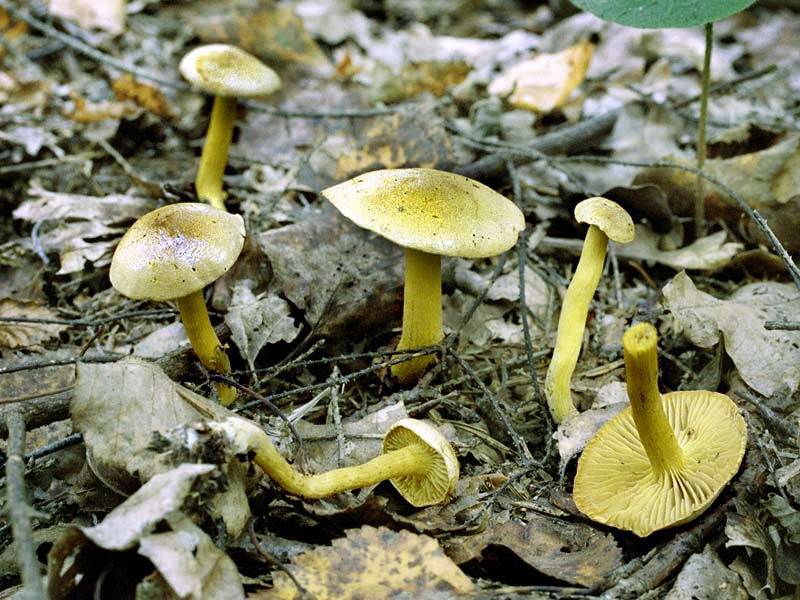
Row pointed mouse (from Latin Tricholoma virgatum)... A highly poisonous mushroom. A small hat with a diameter of up to 5 cm. It resembles a bell in a young mushroom. As it grows, it becomes prostrate, but the tubercle in the middle remains. Mouse-gray skin.
The leg is long - up to 15 cm, thin. The color of the leg is white, towards the bottom the surface turns pink or yellow. The plates may be covered with yellow spots. The pulp is odorless, but has an unpleasant bitter and even pungent taste.
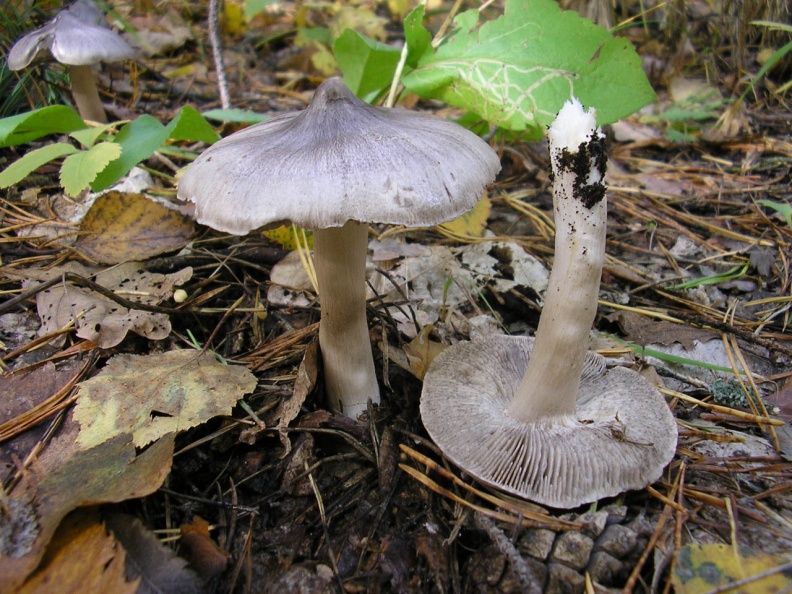
Tiger row, poisonous leopard (from Latin Tricholoma pardinum)... This mushroom is rare and highly poisonous and can easily be confused with edible species. The cap is large with a diameter of up to 12 cm. In a young mushroom, it looks like a ball, then it lengthens and resembles the shape of a bell. The old mushroom takes on a flat, wide cap. The skin is of an ugly, dirty gray color, covered with dark scales in the form of flakes.
A similar edible row has the same hat, but sticky and smooth. The leg is long - up to 15 cm, thin. Expands towards the bottom. Has a velvety ocher coating. The plates are sparse, but dense and fleshy. In adults, droplets of moisture can be seen between the plates. The flesh is gray, yellow at the leg. It does not taste bitter, and has a mealy smell.
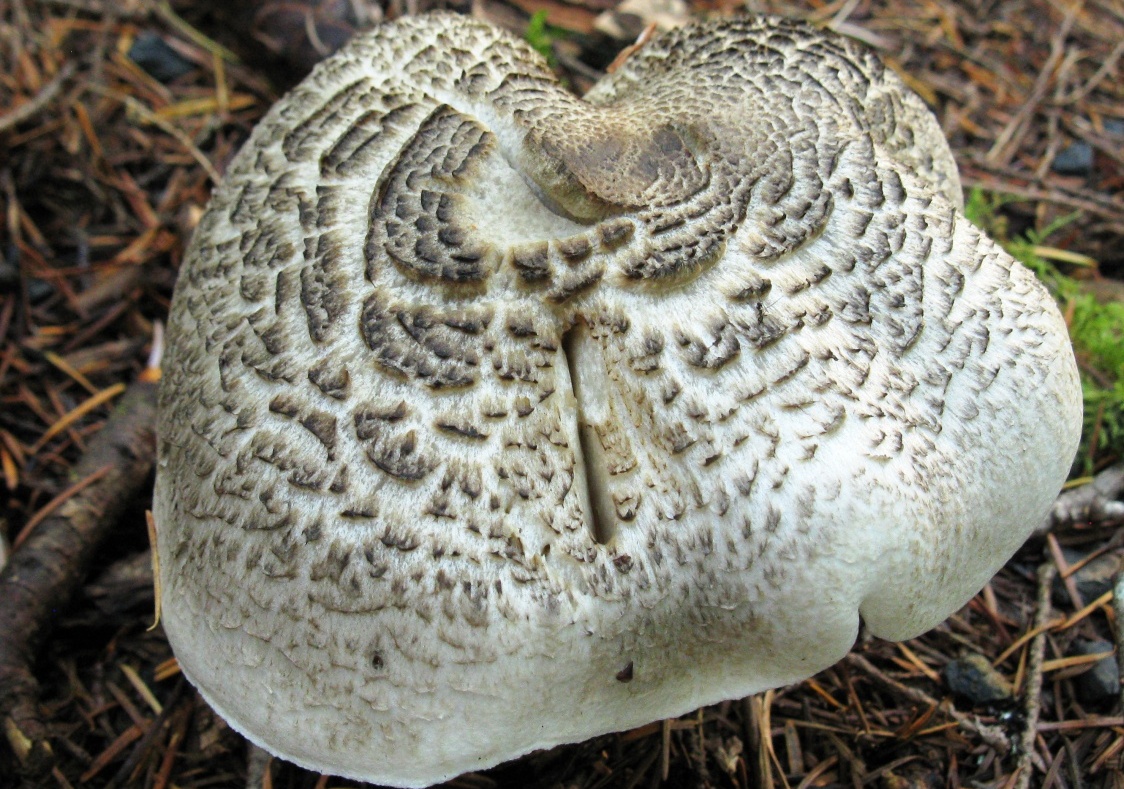
In this article, we talked about the most popular edible types of ryadovok mushrooms, conditionally edible, which can be eaten, but they have a minimum nutritional value. Remember the description and save a photo of poisonous and toxic row mushrooms. If you find a mushroom and doubt its quality, it is better not to take it, because health is more important than the amount of the harvested crop!

